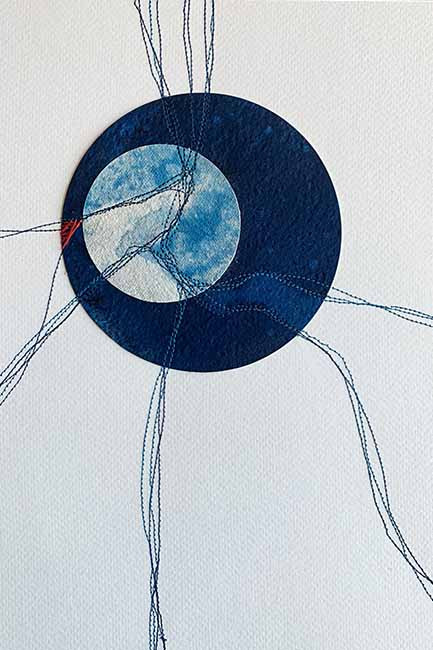Sustainable Art: Environment-Friendly Practices for Artists
Go green with your artwork. Metaphorically, of course.

The increasing prevalence of environmental degradation has emerged as one of the most prominent urban problems in today’s time. As society has become more conscious towards our environment, promoting sustainable living is imperative.
This holds true particularly today, in a world reeling under the effects of the COVID-19 pandemic, where humanity has been brought to their knees, and compelled to relook the choices we make. Artists, through the power of their imagination and tools are drawing attention to the undeniable reality of environmental damage, while emphasising the need for a sustainable lifestyle.
Some artists are focused on reconsidering their medium of art and are involving more sustainable mediums like ephemeral art, land art and also upcycled art. Though, it might not be viable for all artists to involve such practices. The solution offered here is to engage in some minor changes which are practical and promotes environmental sustainability through art. This change, as they say, starts closest to home and originates in the artist’s studio, through the various materials used and practices followed by them.
Here Are 5 Ways An Artist Can Make Their Art Process More Eco-Conscious
1. The use of eco-friendly/natural colours and solvents
For the longest time, it was believed that for colours to be vibrant, they needed to have cadmium – a proven harmful toxin. However, that is not the case, and today, one of the first steps in creating sustainable art, is by being mindful of the materials used. Eco-friendly colours, for example, have gained prominence in recent times as a viable option. Made using non-toxic ingredients, these do not pollute and have a negative effect on the environment, especially when disposed of. The use of natural colours, made using pigments derived from plants is also a guilt-free way to create sustainable marvels. Oil paints, mineral spirits, turpentine, etc. all have chemical components that get into the air and are highly toxic in large quantities, therefore, artists are also actively using and promoting toxin-free solvents, making their colours 100 percent environment-friendly.

2. Adopting the practice of recycling and upcycling material
The very meaning of sustainable, entails conserving an ecological balance by avoiding depletion of natural resources. One of the best ways in which this can be done while creating art is by recycling and upcycling materials. A simple way to start is by reusing canvas, they are versatile in nature and can be easily reused by simply applying gesso on them. Artists who are up for experimentation can try their hand on upcycling, looking around for common household items, like, blocks of wood that would typically be discarded, paper, cardboards, metals, and practically anything around them that can be creatively used to form a masterpiece.

3. Using ethically sourced brushes
While seemingly contradictory to the subject of sustainability and the use of natural resources, brushes stand out as the only aspect of creating art, where this is discouraged. While brushes made with animal hair have established their credibility in the market, in the long run, this is both an unstainable option as well as one that promotes animal cruelty. An ethical option in this case, would be to adopt the use of brushes made with synthetic hair and now a days we have access to the most finely crafted synthetic brushes which are as good as the original sable or hog brushes.
4. Embracing sustainable packaging materials
Artworks are undoubtedly priceless, especially in the eyes of their creators who take great pains to ensure they are safely transported to their destinations. A common practice so far, has been to use bubble wrap, which ensures no damage to the works, even during a bumpy journey. This, along with other polystyrene-based materials have long lasting ecological repercussions, and there is a need to make a conscious switch to environment-friendly packaging. Pulp, biodegradable packing peanuts, and recycled cardboard are just some of the examples of sustainable packaging that can be used.
5. Proper disposal of waste art material
The process of creating a masterpiece involves a lot of materials, most of which often end up in landfills, slowly seeping into the ground. Bearing this in mind, a good practice is to ensure an appropriate disposal process is put in place that prevents harmful chemicals from being released into the environment. Brushes, for instance, can be wiped down, before rinsing them to prevent paint from making its way into water bodies. When disposing acrylics, a good practice is to dispose of them when they have solidified, as the paint forms a film that locks in the pigments, ultimately preventing them from getting into the environment.
While sustainability requires a reconsideration of how we consume, manufacture, and create art, it also induces the artists and creators to rethink their approach. In the world of art, when you imbibe sustainable practices in your works, the more aware you become of your impact on the environment, the more it transcends into your themes, and ultimately into the minds of your viewers. As the adage goes, “Every drop makes an ocean”; similarly, every small step towards creating a sustainable environment has the potential to ignite a spark, and start a movement that will inspire many to build a better tomorrow. This consciousness would be helpful in supporting the health and quality of life of present and future generations while living within the limits of its social and natural systems.
If you feel inspired after reading this piece, to contribute towards the environment and create something responsibly, we suggest you start by making changes in your everyday practice.

Dr Gunjan Shrivastava is a professional artist, educator, art critic and co-founder of You Lead India Foundation.

